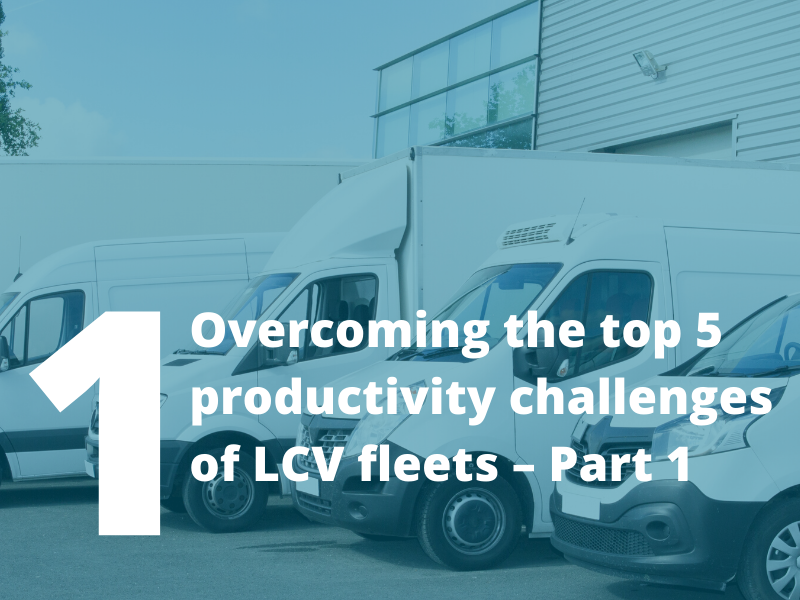25th February 2020
Overcoming the top 5 productivity challenges of LCV fleets – Part 1

The UK’s light commercial vehicle sector has never been more important, driving the economy and supporting millions of jobs across the country.
But the van is not merely a vehicle, it is an essential tool for businesses and the millions of workers they employ across the UK.
The day-to-day operational management of an LCV fleet is busy and challenging enough, but as every fleet professional knows, long-term profitability requires long-term vision. In a mobility ecosystem that has become faster and more volatile than ever, that’s an increasingly difficult task to accomplish.
Below is part 1 of our overview of the five biggest productivity challenges for commercial fleets, and tips on how to overcome these in order to improve efficiency and reduce costs.
Challenge 1
Paperwork
LCV fleet administration eats up a frustratingly large amount of time and effort. It might not appear as a cost on your financial statement, but time spent on administration tasks that aren’t core business activities is an expense that can easily add up when it comes to fleet management.
Tasks like quoting and invoicing can cut into your day, reducing your productivity and ultimately limiting the amount of time you can spend on revenue-generating or business critical activities.
Solutions:
Digitise. Reducing paperwork doesn’t just reduce paper, it also reduces work. That’s because digitised processes are easier to automate – invoicing, delivery scheduling, managing operational expenses, etc.
Outsource. Employing the support of an external fleet management service provider reduces the need to deploy key human resources; thus freeing up teams to focus on the core business competencies. A professional fleet management provider will be able to provide access to a range of systems, tools and knowledge that had previously been unavailable such as specialist fleet management software and other tools and procedures to reduce the burden of administration tasks and help keep things running efficiently.
Stay tuned for next week’s article where we will be discussing Productivity Challenge number 2 .